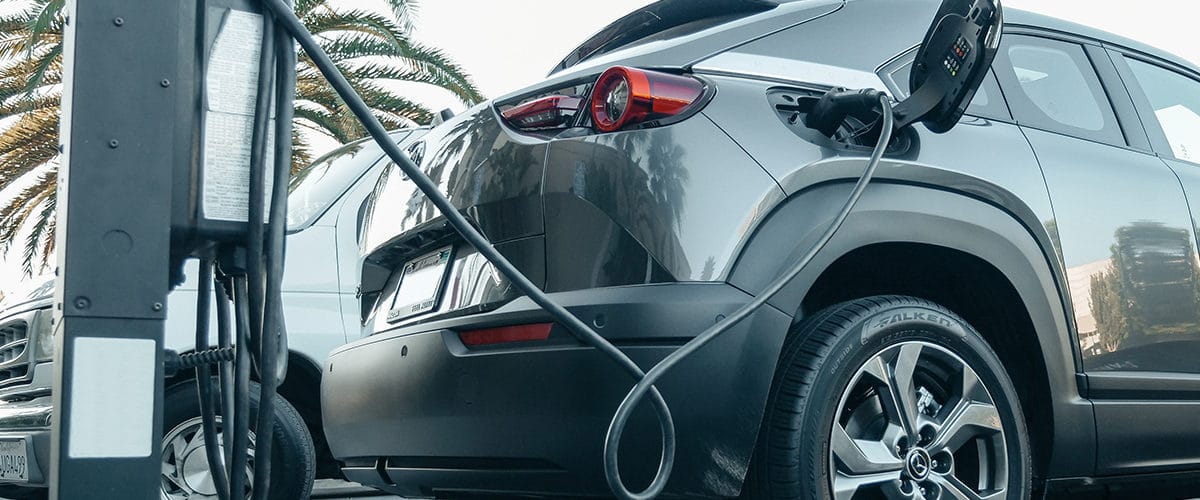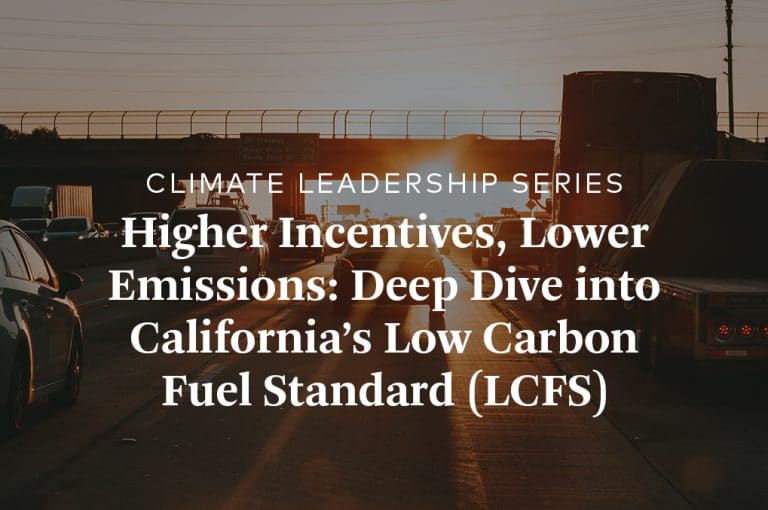Widespread adoption of zero-emissions vehicles (ZEVs) could assist many regions in achieving robust greenhouse gas mitigation goals. Government mandates, market-based incentive programs, and innovative technologies have been building momentum, and the transportation sector seems to have reached a tipping point. To meet its ambitious targets, the United States needs a solid suite of electric vehicle (EV) charging and refueling infrastructure. So far, California is the leading state in the deployment of EVs, and has set aggressive climate goals. By 2025, the state hopes to have adequate infrastructure to support 1.5 million ZEVs, and provide 250,000 battery EV chargers.
EXPANDING CLEAN FUELS INFRASTRUCTURE
Clean transportation is developing nationwide, but is particularly present in California due to both the proliferation of EV charging infrastructure and the availability of EV purchase incentives. There is wide agreement that the availability of clean energy infrastructure is required to enable wide-scale EV adoption. To further catalyze the rapid expansion of EV charging stations in California, a ZEV infrastructure crediting provision was added to the state’s Low Carbon Fuel Standard (LCFS) in 2018.
While most credits generated under the LCFS are related to fuel dispensed, the infrastructure provisions enable entities to generate credits for available fueling capacity instead of actual fueling activity. The infrastructure provision covers both Hydrogen Refueling Infrastructure (HRI) and Direct Current (DC) Fast Charging Infrastructure (FCI), also known as Level 3 chargers.
Levels 1 and 2 charging use a universal connector that can be plugged into any EV, and the majority of consumer EV owners do their charging at home using Level 2 chargers, which are relatively slow and inexpensive. Most often, DC fast chargers — which charge an EV battery in about half an hour — can be found at commercial centers, or along major travel corridors.
Fast charging provides the fastest available fill-up, but not every EV model is equipped for it. DC fast charging uses three different connector systems: CHAdeMO, CCS Combo, and Tesla Supercharger. When installing an EV infrastructure, it is important for station owners to consider the type of charger they offer. In some cases, the amount of possible FCI credits may be limited if only one charger type is available at a site. Understanding what variables to consider in an installation project will help your organization maximize its cost savings.
WHAT ARE INFRASTRUCTURE CREDITS?
The infrastructure crediting provisions come from an attempt to solve a chicken-or-egg problem. While consumers want assurance that they will have access to charging stations in a variety of locations, infrastructure owners want to know demand will exist to drive utilization. The LCFS Charging Infrastructure crediting provisions ensure infrastructure owners are able to recoup their investments by providing a revenue stream for fueling stations based on the capacity made available, rather than the actual fuel dispensed. 
Incentivizing the expansion of charging infrastructure is critical during this early stage of ZEV adoption. As fueling activity increases, the number of credits generated under the infrastructure provision decreases, until eventually all of the credit activity is derived from actual fueling. Each site has a fueling capacity limit — the maximum is 1,200 kg/day for HRI stations, and between 2,500 kw for FCI stations, where each charger at the FCI station must have a nameplate capacity of between 50 kW and 350 kw.
The HRI station’s fueling capacity is generated by studying factors such as time between fills, hourly distribution, and mass flow fueling rate. Crediting for HRI stations is based on 100% of the station capacity while FCI credit generation depends on charger capacity and covers 10-20% utilization. Infrastructure credits can be generated for five years at FCI stations and fifteen years at HRI stations.
ELIGIBILITY AND APPLICATION APPROVAL
There are limits to the number of facilities that can be approved by California Air Resources Board (CARB). As of November, 2021, there were 62 HRI stations and 1,314 FCI stations at a total of 259 sites across California. Applications for new stations can be accepted as long as the estimated potential HRI and FCI credits from all approved stations does not exceed 2.5% of LCFS deficits in the prior quarter.
In addition to the global program requirements, individual stations must be publicly accessible 24 hours a day. An eligible station cannot have any gates or codes to access, and should not require any special training to be used, and the site must accept major credit and debit cards at the point of sale terminal.
The application and documentation process can be complex and onerous. Fuel station owners must report fuel transactions on a quarterly basis to CARB, they must include cost and revenue data in their quarterly reports, and there are additional annual reporting requirements. With so many specific rules, infrastructure crediting can be difficult to navigate. Working with an advisor like 3Degrees can help alleviate the administrative burden of program participation while ensuring the highest possible return. For more information, please contact us here.




